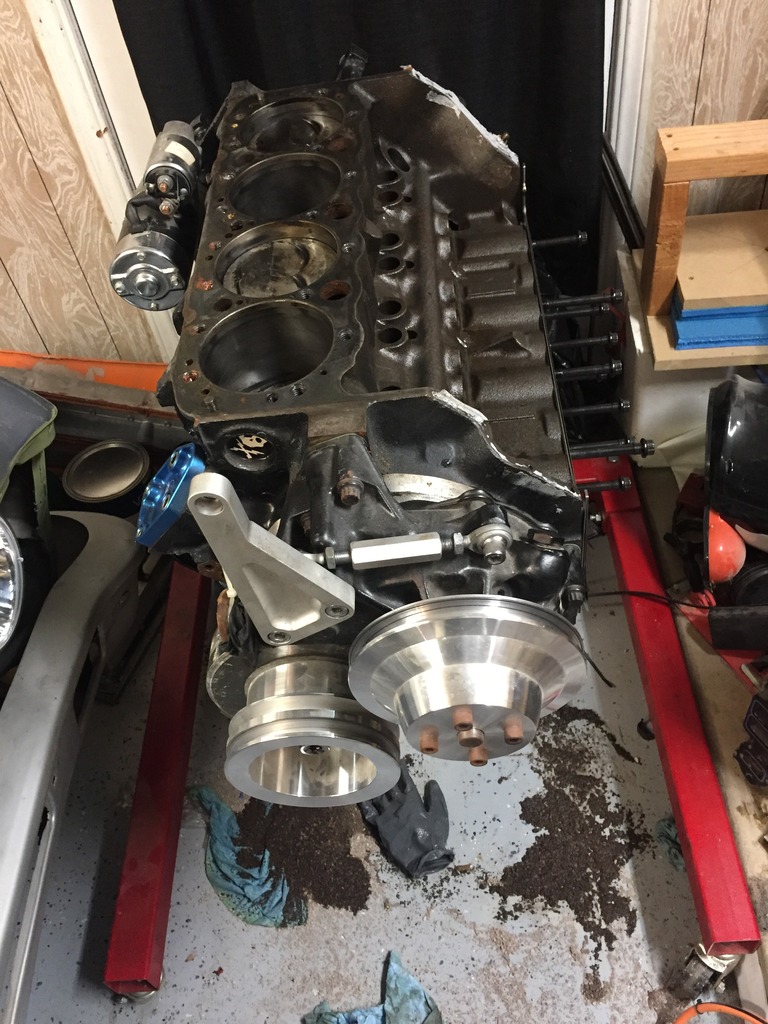To seat rings well stick the car in first gear and also do second gear.
Drive down a long not so used road and accelerate to like 5000 rpm and let off the gas coast to 2000 rpm or so,,this creates a lot of vacuum in the engine and really helps seat rings.
Rev it coast down.. keep doing that the rings should seat.. maybe 20 times or so.
Another thing on molly rings is that anything coarser than 420 grit will wear the molly faced coating off the rings.
I noticed what looked like a cheap hone job on the cylinders.
The old 3 shoe hone..most were 240grit and very fine was 400 if you can even find them.
I have my molly ring cylinders finished at 620 if you are going to do it on the cheap side a little backyard know how assembly then take 1500 grit wet sandpaper and sand in a circular motion in the cylinders by hand to knock the coarseness off of thoe 3 shoe hones.
Years many years ago my uncle wrote sealed power corp. When they came out with the molly faced rings which GM and others had in their production vehicles.
He asked what the best surface was to seat the moly rings.
they wrote back and stated --You know that 100,000 mile polish in a cylinder wall that has a golden sheen to it. That is the best surface to seat our molly rings.
Some Of my roundy round friends want to see their thumb nail reflection in a finished cylinder wall and then use the molly rings.part # we used was E251K for the 4"+ bore stuff ford ,chevy, olds..etc.
But do know they changed a lot on that same part number.. the rings are not what they used to be.
The melling M55 went to crap also,,word has it they redid it to fix the issue.
The old regular cast flat tops are not what they used to be either # 345NP
I would scream those to 8000+ in 350" engines and no issues. .0035-.0045" piston to wall clearances.
Now the things have less meat around the pins and sloppy looking machine and casting work along with shorter skirts.
I hate when they change a good thing.
I actually tried some Hypereutectics..lasted 6 months and grenaded one..Nothing left in that hole but a rod that was bent and a wrist pin.
Drive down a long not so used road and accelerate to like 5000 rpm and let off the gas coast to 2000 rpm or so,,this creates a lot of vacuum in the engine and really helps seat rings.
Rev it coast down.. keep doing that the rings should seat.. maybe 20 times or so.
Another thing on molly rings is that anything coarser than 420 grit will wear the molly faced coating off the rings.
I noticed what looked like a cheap hone job on the cylinders.
The old 3 shoe hone..most were 240grit and very fine was 400 if you can even find them.
I have my molly ring cylinders finished at 620 if you are going to do it on the cheap side a little backyard know how assembly then take 1500 grit wet sandpaper and sand in a circular motion in the cylinders by hand to knock the coarseness off of thoe 3 shoe hones.
Years many years ago my uncle wrote sealed power corp. When they came out with the molly faced rings which GM and others had in their production vehicles.
He asked what the best surface was to seat the moly rings.
they wrote back and stated --You know that 100,000 mile polish in a cylinder wall that has a golden sheen to it. That is the best surface to seat our molly rings.
Some Of my roundy round friends want to see their thumb nail reflection in a finished cylinder wall and then use the molly rings.part # we used was E251K for the 4"+ bore stuff ford ,chevy, olds..etc.
But do know they changed a lot on that same part number.. the rings are not what they used to be.
The melling M55 went to crap also,,word has it they redid it to fix the issue.
The old regular cast flat tops are not what they used to be either # 345NP
I would scream those to 8000+ in 350" engines and no issues. .0035-.0045" piston to wall clearances.
Now the things have less meat around the pins and sloppy looking machine and casting work along with shorter skirts.
I hate when they change a good thing.
I actually tried some Hypereutectics..lasted 6 months and grenaded one..Nothing left in that hole but a rod that was bent and a wrist pin.













